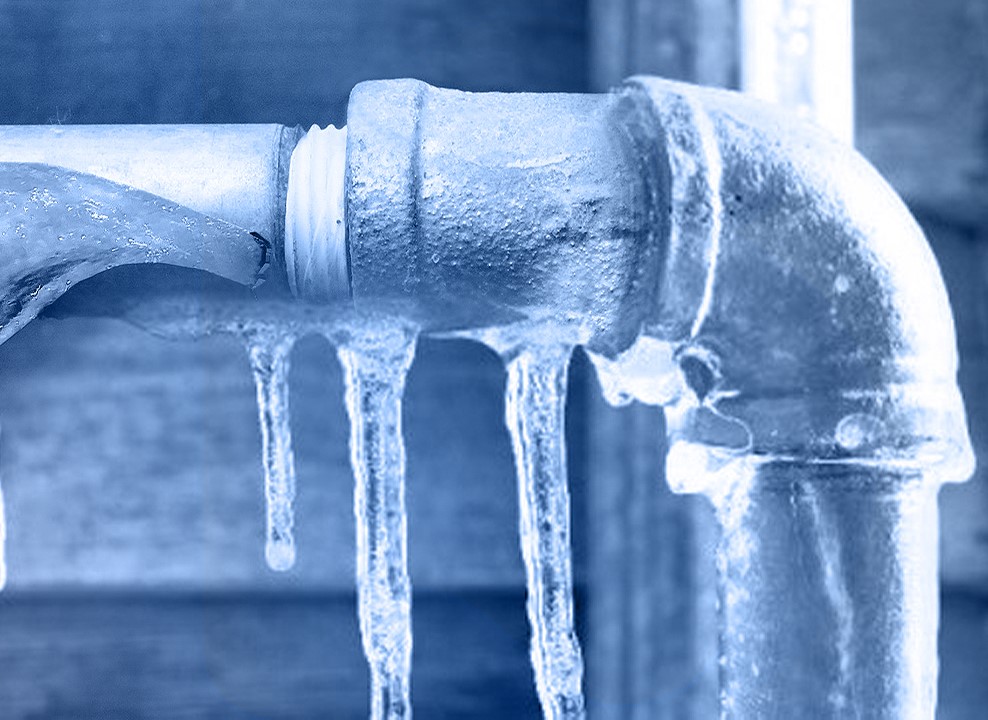Avoiding Frozen Pipes: Top Methods for Cold Weather
Avoiding Frozen Pipes: Top Methods for Cold Weather
Blog Article
The content directly below on the subject of How To Avoid Freezing Pipes is incredibly engaging. You should investigate it.

Winter can wreak havoc on your pipes, especially by freezing pipelines. Right here's exactly how to stop it from happening and what to do if it does.
Introduction
As temperatures decrease, the danger of frozen pipes boosts, potentially causing expensive fixings and water damages. Understanding exactly how to stop frozen pipes is essential for house owners in cold climates.
Prevention Tips
Protecting at risk pipelines
Cover pipes in insulation sleeves or make use of warm tape to protect them from freezing temperatures. Concentrate on pipes in unheated or outside areas of the home.
Home heating techniques
Maintain indoor spaces properly warmed, especially areas with pipes. Open up cabinet doors to permit cozy air to flow around pipes under sinks.
Just how to recognize frozen pipelines
Try to find reduced water flow from faucets, uncommon odors or sounds from pipes, and visible frost on revealed pipes.
Long-Term Solutions
Structural modifications
Take into consideration rerouting pipelines far from outside walls or unheated areas. Include additional insulation to attics, cellars, and crawl spaces.
Upgrading insulation
Invest in premium insulation for pipelines, attics, and walls. Proper insulation assists keep constant temperatures and lowers the threat of frozen pipes.
Protecting Exterior Pipes
Garden hose pipes and outdoor taps
Detach and drain yard hose pipes before winter. Install frost-proof faucets or cover outside taps with insulated caps.
Recognizing Frozen Pipelines
What creates pipelines to ice up?
Pipes ice up when subjected to temperature levels listed below 32 ° F (0 ° C) for expanded periods. As water inside the pipelines freezes, it increases, putting pressure on the pipe wall surfaces and possibly creating them to burst.
Risks and problems
Icy pipes can lead to water interruptions, building damages, and pricey repair work. Burst pipes can flooding homes and trigger substantial structural damages.
Indications of Frozen Water Lines
Determining frozen pipes early can stop them from breaking.
What to Do If Your Pipes Freeze
Immediate actions to take
If you believe frozen pipes, maintain faucets open up to eliminate pressure as the ice thaws. Utilize a hairdryer or towels soaked in warm water to thaw pipes gradually.
Conclusion
Protecting against frozen pipelines requires aggressive measures and quick feedbacks. By understanding the causes, indications, and preventive measures, homeowners can secure their plumbing during winter.
Helpful Tips to Prevent Frozen Pipes this Winter
UNDERSTANDING THE BASICS: WHY PIPES FREEZE AND WHY IT’S A PROBLEM
Water freezing inside pipes is common during the winter months, but understanding why pipes freeze, and the potential problems it can cause is crucial in preventing such incidents. This section will delve into the basics of why pipes freeze and the associated problems that may arise.
THE SCIENCE BEHIND FROZEN PIPES
When water reaches freezing temperatures, it undergoes a physical transformation and solidifies into ice. This expansion of water as it freezes is the primary reason pipes can burst. As the water inside the pipe freezes, it expands, creating immense pressure on the walls. If the pressure becomes too great, the pipe can crack or rupture, leading to leaks and water damage.
FACTORS THAT CONTRIBUTE TO PIPE FREEZING
Low Temperatures: Extremely cold weather, especially below freezing, increases the risk of pipes freezing. Uninsulated or Poorly Insulated Pipes: Pipes located in unheated areas, such as basements, crawl spaces, or attics, are more prone to freezing. Insufficient insulation or lack of insulation altogether exacerbates the problem. Exterior Wall Exposure: Pipes running along exterior walls are susceptible to freezing as they encounter colder temperatures outside. Lack of Heating or Temperature Regulation: Inadequate heating or inconsistent temperature control in your home can contribute to frozen pipes. PROBLEMS CAUSED BY FROZEN PIPES
- Pipe Bursting: As mentioned earlier, the expansion of water as it freezes can cause pipes to burst, resulting in significant water damage.
- Water Damage: When pipes burst, it can lead to flooding and water damage to your property, including walls, ceilings, flooring, and personal belongings.
- Structural Damage: Prolonged exposure to water from burst pipes can compromise the structural integrity of your home, leading to costly repairs.
- Mold and Mildew Growth: Excess moisture from water damage can create a favorable environment for mold and mildew growth, posing health risks to occupants.
- Disrupted Water Supply: Frozen pipes can also result in a complete or partial loss of water supply until the issue is resolved.
WHY CERTAIN PIPES ARE MORE PRONE TO FREEZING
- Location: Pipes located in unheated or poorly insulated areas, such as basements, crawl spaces, attics, or exterior walls, are at higher risk of freezing.
- Exterior Pipes: Outdoor pipes, such as those used for irrigation or exposed plumbing, are particularly vulnerable to freezing as they are directly exposed to the elements.
- Supply Lines: Pipes that carry water from the main water supply into your home, including the main water line, are critical to protect as freezing in these lines can affect your entire plumbing system.
- Underground Pipes: Pipes buried underground, such as those connected to sprinkler systems or outdoor faucets, can be susceptible to freezing if not properly insulated.
https://busybusy.com/blog/helpful-tips-to-prevent-frozen-pipes-this-winter/
:strip_icc()/snow-outdoor-faucet-pipes-4af65d1e5e904fb1aa7bf74071fe5d89.jpg)
I found that content about Preventing and dealing with frozen pipes when doing a search on the search engines. Enjoyed our blog posting? Please share it. Let another person locate it. Thanks for being here. Please visit our website back soon.
Call Today Report this page